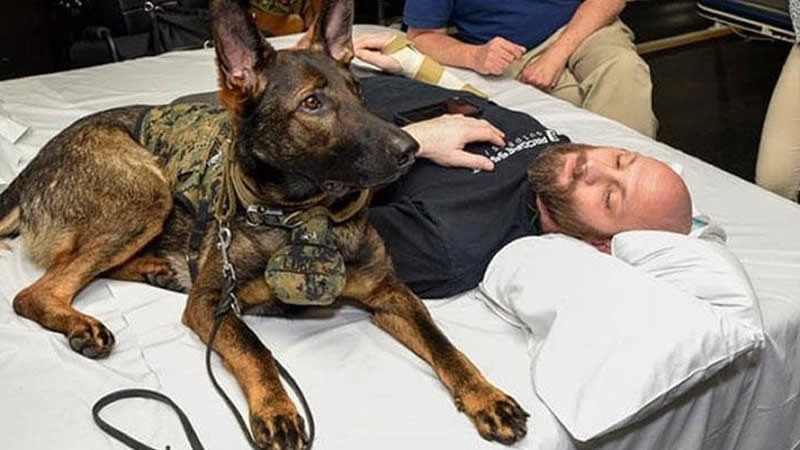When then-Army Sgt. Harvey Naranjo realized the therapeutic influence that man’s best friend can have on troubled soldiers, he started the Defense Department’s first facility dog program in 2005.
Naranjo was participating in a therapeutic horse riding program with injured Special Forces warfighters. The way the wounded warriors interacted with the stable dogs struck him.
“These tough guys, who have gone through traumatic injuries, amputations, and had been shot – all of a sudden I see them rolling around on the floor, baby talking to the dogs, and I saw them put their guard down,” Naranjo recalled.
He could see a “true personality emerge from the very reserved service members for the first time.”
Naranjo, who currently oversees the adapted sports program for the Occupational Therapy Department at Walter Reed National Military Medical Center in Bethesda, Maryland, stated, “I thought of how much more I could do for them if I had a dog.”
Naranjo told a hospital volunteer about his observation at the time, and Deuce, a chocolate Lab, was soon sent to him.
“And before I knew it, there was a dog in the clinic,” Naranjo said.
Since then, the Walter Reed facility dog program has developed, and the concept has moved to other military medical care centers.
Patients suffering from stress, depression, or anxiety can benefit from facility dogs. They bring distraction, unconditional love, and comfort to patients, allowing them to recuperate or manage better with their health issues. They also help to decompress staff and patient families.
At Walter Reed, there are now seven facility dogs. Golden Retrievers, Labrador Retrievers, and one German Shepherd are among the dogs that have received extensive training from other organizations.
They are usually extremely busy.
According to the handlers, the dogs have a beneficial impact on 12 patients and their families for every hour they work. These canines, on average, work over 200 hours every month and interact with over 2,500 people.
As per Korea Stripes, five to seven inpatients wanted a facility dog (therapy support dog) visit every day prior to COVID-19. In outpatient settings, the dogs are currently assisting staff, patients, and families. (Handlers make sure the individual dog’s workday is limited and that he or she gets enough rest.)
According to Naranjo, dogs play a significant part in the care of injured or ill service members as well as other patients who may have a long path to recovery.
“Our service members are missing their homes, and they’re missing their families and their pets. This is like an extension of their pets,” Naranjo said.



